This post is an excerpt from “Bikenomics: How Bicycling Can Save the Economy,” the updated and expanded second edition. Slated for release by Microcosm Publishing in September 2016, Bikenomics is an accessible, practical analysis of the way our transportation choices impact our economy, and a call-to-action for more doing everything we can to get more people on bikes.
“Bikes don’t pay for the roads.” You see it again and again. It appears on editorial pages, in blog comments, and shouted from car windows, often accompanied by the accusation: “Freeloader!” or something ruder.
The bicycle freeloader myth is a strong and pervasive economic belief. It’s implied in rules that require cyclists to stay off certain roads, or ride in a manner that does not affect car traffic. And it’s enforced through media headlines, police standards, and the behavior and discourse of cycling advocates and detractors alike.
But is it true?
When you take a trip on a bicycle, you do not pay for gas, and thus you pay no gas tax. You do not stop and pay tolls (and you are generally not allowed on toll roads). You do not pay a license or registration fee, part of which goes toward paving, maintaining, and policing the roads you ride on. Most car insurance companies do not cover bicyclists, so often you do not pay for that either. And you do not pay for parking. No doubt this all seems terribly unfair.
Of course, though there are many people out there who solely get around carfree, chances are good that any given person out riding a bicycle on the road also owns a car, or rents one from time to time. When they do so, they pay all the same fees, fines, and taxes as an everyday motorist does, and just as grudgingly.
But here’s the thing: Cars don’t pay for roads, either.
The idea that roads are funded by user fees paid by people who drive is one of the great myths that buttresses our entire way of life. While the veneer on that myth has been crumbling for some time, we have only recently been forced to begin to look hard at it. And the difference between riding a bicycle and driving a car is surprisingly vast – but not in the way most of us imagine.
What if I told you that by driving a car you become a freeloader, a drain on the economy? That people who bicycle instead are subsidizing a road system that they are largely not welcome on? In order to break even on the cost of roads and pay for every driver who uses them each year, we would need 54% of commuters using a bicycle as their sole means of transportation.
It’s not great news for most people. After all, driving a car is extremely expensive; and if you live in the US a car may be your best bet or only way to get to work and otherwise go about your life. Unfortunately, it is also true. Driving is one of the most heavily subsidized things we do on a daily basis.
Cars pay for about half of the cost of our roads, all told. That’s it. Half.
So where does the rest of the funding come from for all that asphalt? We all pay it – whether or not we drive.
Most of what we pay for the roads is not paid directly, but through our taxes. Every time we pay sales tax on a purchase, property tax on our homes (directly, or indirectly through our rent), or income tax on what we earn, a portion of that goes directly into our transportation system.
A portion of all these taxes are paid into a general fund, which is where most transportation money comes from. But the real costs of building roads end up being much higher over the years than what the budget can afford. A growing amount of road costs are paid for with borrowed money. We must eventually pay off these loans through our taxes, with interest that can amount to two, three, or more times the original cost of the project.
Worse, this funding gap increases every year. With the economy dragging, we drive less, and as fuel and material costs rise, construction grows more expensive.
Roads are enormously expensive to build and maintain. If you look only at the highway system, the user fees paid by drivers come much closer to paying for them than half, though the system still operates at a loss. But if you look at local roads, on which most of our daily travel happens, the gap is even wider. The cost to maintain local roads is, on average, more than 6 cents per mile for each car each year. How much of this do drivers actually pay? Less than a penny. What does this mean for bicycling? While people do not pay to ride bicycles on the road, bicycling also costs almost nothing – less than 1% of money spent on transportation infrastructure goes to anything bike-related, and bicycles do not contribute significantly to other road-related expenses like potholes, crashes, or congestion.
People who ride bicycles also pay taxes, which means they often pay more into the road system than they cost it. By one estimate, a carfree cyclist would overpay by an average of $250 a year – a few dollars more than the amount the average driver underpays. While cyclists represent all income levels more or less equally, the half who ride for transportation alone and do not own cars are on the lower end of the income spectrum. For them this is the very definition of a regressive tax – like the lottery, a program by which the poor subsidize the better-off.
By that measure, to pay for the cost of keeping one driver on the road, you need someone else who is not driving – that is, paying taxes but putting minimal wear and tear on the system. But two thirds of people in the US drive and most of the rest travel in cars and on buses as passengers. It’s a recipe for debt, yet there is a constant demand for more roads to be built so that more of us can drive farther and more often.
Despite a growing number of bicycles on the roads, there are not nearly enough to balance out this equation. But even if motorists were to double the fees they pay – and if those fees were indexed to inflation – it would still not be enough. Our road system is in bad shape, and we have not been able to spend nearly enough on it in the last decade to keep it even in minimally good working order.
That’s just the beginning of the story, though. Roads, economically unsustainable in their own right, result in towering externalities, costs or benefits attributed and paid for elsewhere, indirectly. When you take these costs into account – from health to safety to local economies to global energy – by the most conservative estimate, the cost to keep each car on the road is 30 times the cost of each bicycle.
Yet not a month goes by without some clever politician deciding that the best way out of our transportation funding crisis is to license and register bicyclists. Every year it is up to weary bicycle advocates to do the math once again to show that there is no way for such a scheme to break even on its administrative costs, never mind the cost of accommodating a sudden increase in cars on the road and passengers on transit.
The humble bicycle, long a scapegoat, may yet prove our salvation from a transportation system running at a deficit. This is not so far-fetched as it may seem at first glance.
Take Copenhagen, where forty years ago the incursion of cars and roads looked very similar to that in today’s US cities. But today, 84% of the city’s residents regularly ride bicycles. Each mile traveled on a bike earns the city, by one analysis, 42 cents. That same mile driven in a car costs the city 20 cents. Bicycling rates there have begun to decline in recent years, and city leaders are scrambling to make bikeways more comfortable and convenient. They know they can’t afford not to.
In the US, we can’t afford not to either, but it’s harder for us to see – bicycling hasn’t grown into normalcy in the same way. But when you consider that almost 70% of our car trips are under two miles – a forty minute walk or a twelve minute bicycle ride – change seems more feasible. More than two thirds of people in the US say that they wish they bicycled more often, and an increasing number are doing so. The barriers are real, but can be overcome cheaply and quickly. And the benefits multiply and spread into every aspect of our economy and our lives.

Elly Blue is a writer and bicycle activist living in Portland, Oregon. Her work has appeared in The Guardian, Grist, Bicycling Magazine online, Bitch Magazine, BikePortland, The Magazine, and Momentum, among other publications. She has been featured on Democracy Now!, in the Oregonian, and on Oregon Public Broadcasting. She tours annually with the Dinner and Bikes program that she co-founded, and is co-producer and director of Groundswell, a series of movies about people using bicycling to make their communities better. Since January 2015, she is co-owner and marketing director at Microcosm.
Get your FREE copy of: Momentum Mag's Bike Lock Guide
In this guide, we share stats on bicycle theft, the best ways to lock your bike and which ways to avoid, types of locks to use, new technologies combating theft, a directory of brands and much more!
Thank you for your submission. Please check your inbox to download the guide!

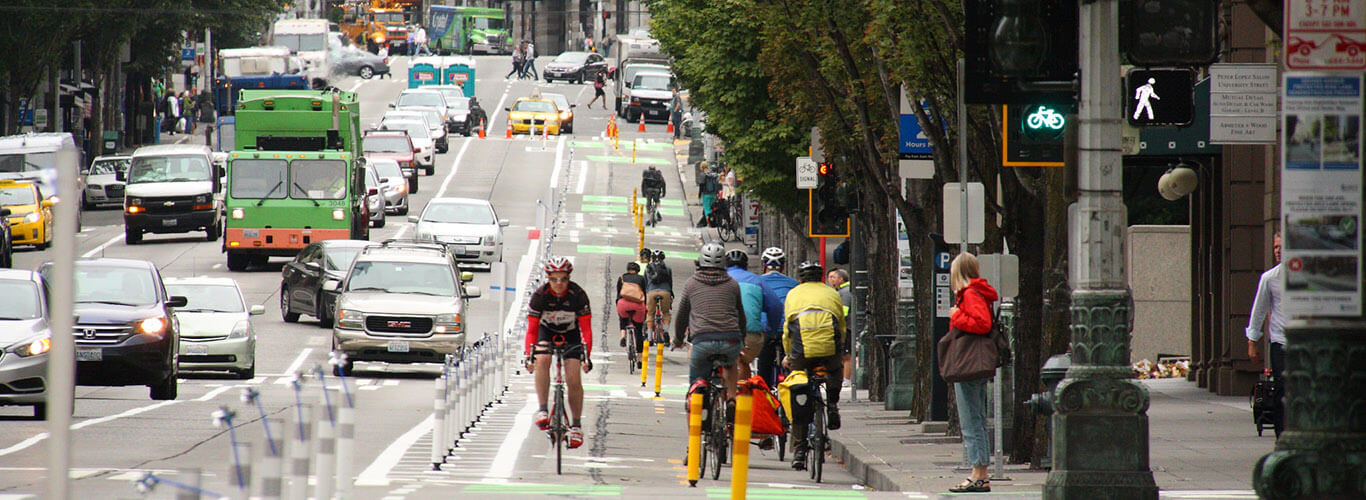

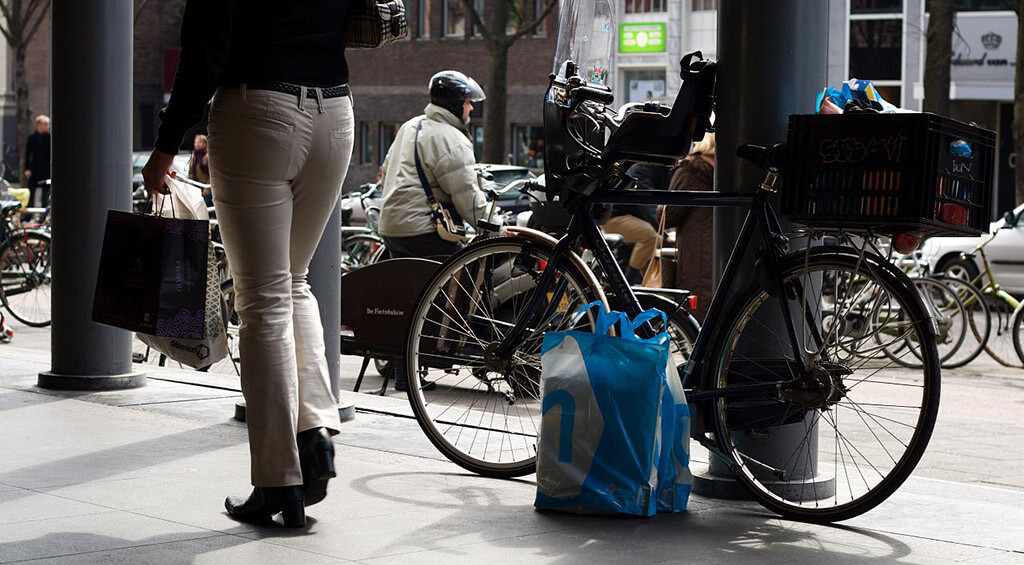

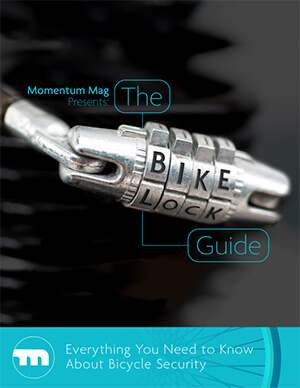
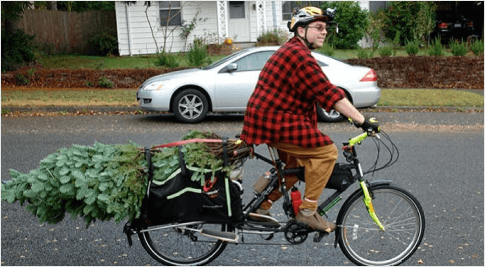
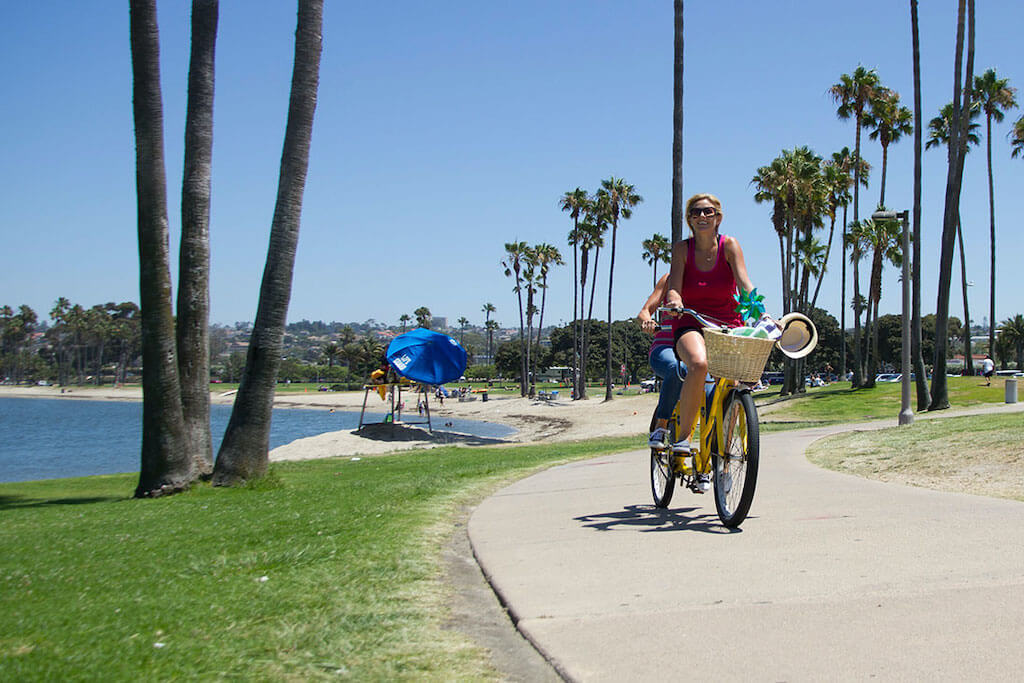

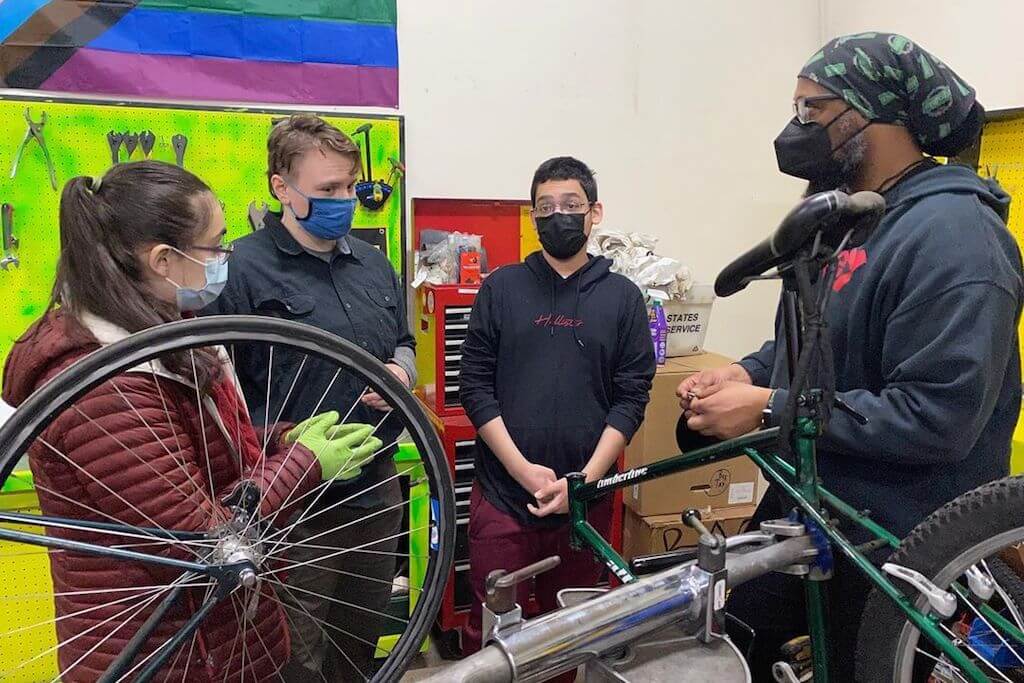
Obey the rules of the road and we wouldn’t complain. And you should need a license, period.
The road maintenance is peanuts compared to insurance. When a bicycle hits a car and it is the bicycle rider’s fault. Guess whose insurance is going to pay the medical? All drivers insurance.
Your statement is not true. I just check with my insurance and they said my homeowner & umbrella policy will cover my medical and property damage liability if I am at fault while using my bicycle. I have $1 million total coverage limit, way above my State’s minimum requirement of $60 medical & $25k property damage.
That’s a cunning answer to a chanlelging question
I am a bicycle advocate in a mid-sized, Southern U.S. city. I recently went to a public meeting of the governor’s transportation task force, their key mission being what to do about traffic in the metro area? Their solution, of course…is more roads. About $5 billion worth over the next 20 years, a figure that doesn’t include the statewide backlog of road projects already in some stage of planning ($12 billion). Turns out, not increasing the gasoline tax for 20 years is really, really stupid. But when someone on one of the panels actually suggested getting cars off the road as part of the solution to traffic and bicycles being a part of this goal, one task force member of the panel suggested exactly what the article stated: a registration fee for cyclists because currently, we “don’t pay for the roads.” It was most infuriating. I sent him an email stating most of the information in this article, and he responded with something to the effect of “People driving from their homes in the suburbs have a right to use the roads. People on bikes do not.” This is factually wrong, of course, and I sent him the state law stating so. This is the type of person who is actually in charge of transportation policy. Another member of the task force, who’s also the chair of the House transportation committee, was the main opponent of a vulnerable road users bill which was defeated earlier this year, narrowly. When these are the people calling the shots, what else is there to do? It’s this type of thing that makes me question whether or not bicycle advocacy is even worth it where I live.
Hey Doug! As frustrating as it is to know these people are in positions of power don’t give up! Keep sending those emails and being the voice of common sense. Your efforts will be greatly appreciated by many.
“Never doubt that a small group of thoughtful, committed citizens can change the world; indeed, it’s the only thing that ever has.” -Margaret Mead
In the UK when you pay tax it goes into a central pot. That means that if you’re a tax payer you pay for the roads.
Ms. Blue– could you share the research/sources/data behind the numbers you distilled? Or do I need to wait until September to buy the book : )
http://www.vtpi.org/whoserd.pdf
“Take Copenhagen, where forty years ago the incursion of cards and roads looked very similar to that in today’s US cities.” Watch out for “cards”. Cars too.
Oh jeez. Fixed, thank you.
While cars pay for only half the cost motor vehicles do almost 100% of the damage. A bikeway is less expensive to build and lasts far longer than a typical road.
I don’t agree that cars do essentially 100% of the damage to roads. Trucks do substantially more damage than cars, since road damage goes roughly as the third power of vehicle weight. A loaded 18-wheeler is about 20 times the weight of an average car, but its road damage is equivalent to about 9600 cars.
And we all purchase goods delivered by heavy trucks.
I think the term “car” is meant to include all forms of automobiles on the road. If anything, we should simply do what California is doing and trying to come up with a fee based on total vehicle miles traveled. If that should come to pass- a small light car should pay less than a massive SUV based on what each car class does in terms of wear and tear. So I think the difference between a car and a truck is important, it is only when actually computing the wear a car versus a truck makes that we should have to separate them out. For now, a bike v. car economic discussion should assume car = all forms of automobile.
Let’s not forget that sidewalks are also somehow mysteriously paid for and are required to get from your car, or bicycle, to most places of business and entertainment. If we are going to curse the bicycle rider for using the road, shouldn’t we also charge all those free loading walkers? I think we all accept that we need a transportation system to be economically viable, or just to get somewhere. The problem is that many people think there is only one type of transportation, even as they walk to and from their cars.
Absolutely brilliant remarks. I will definitely be parroting; thanks for the simple yet effective logic.
The basic argument is pretty good, but the author should have resisted the temptation to throw in Copenhagen. Copenhagen may be a great model of building a bikeway network, but the structure of taxes and government spending is quite different in Denmark than in the US, so it’s not really a model on that level.
The other issue is that motor vehicles do far more damage to roadbeds than bicycles. The typical formula is that the amount of damage done is the vehicle’s weight to the fourth power, divided by the number of axles. So if the combined weight of a bike and rider is 200 lbs, and a car is 2000 lbs, the car is doing 10,000 times more damage to the road. The maintenance costs imposed by a cyclist are minimal.
Elly, you may be surprised to see how much tax bicyclists pay on the extra food they buy to fuel their bicycling. It’s similar to what motorists pay on gas tax. See my article at http://www.bikewalknc.org/2015/10/cyclists-and-peds-pay-fuel-taxes/
Good article.
However, the author writes:
“You do not pay a license or registration fee, part of which goes toward paving, maintaining, and policing the roads you ride on. ”
I have never heard of any license or registration fees going toward paving, maintaining or policing roads. If anything, fees probably do not even cover the services provided.
My understanding is that these fees go into the same pool of money used for construction and maintenance. There are is not a separate distribution at municipal, state, nor federal levels.
You forgot to mention all the people who park their cars on the street for free. Some streets have parking meters, but most of the streets where I live have free parking on the road. When a car parks on a road it takes up a whole lane. I would think that some cost numbers you gave for cyclists and drivers might have taken street parking into account.
Comments are closed.